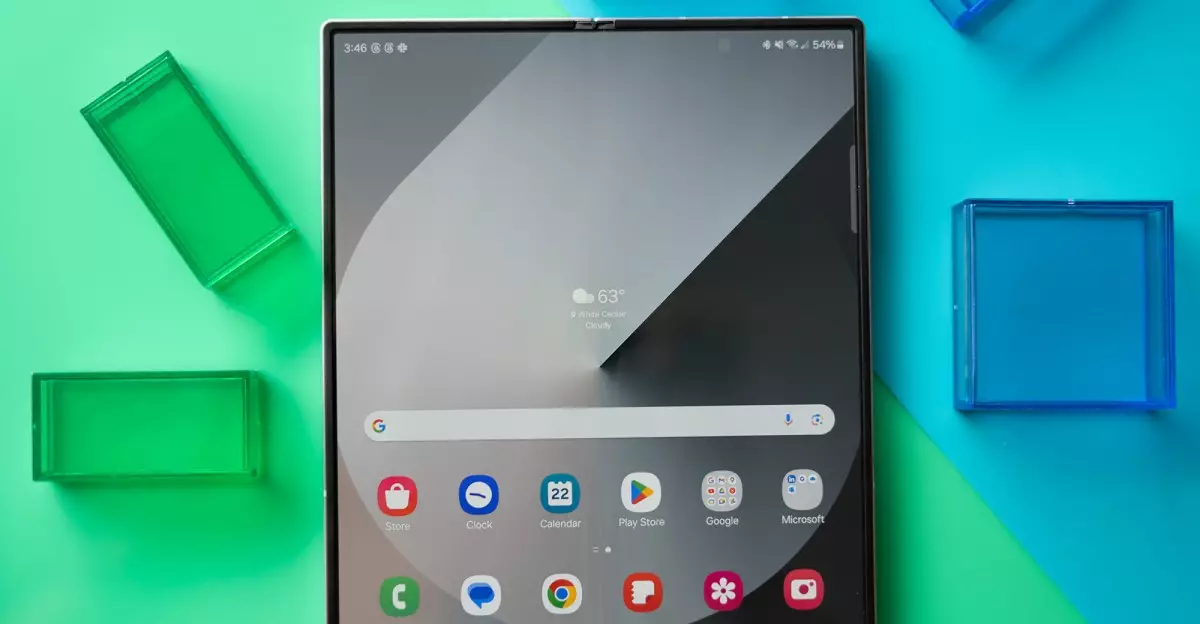For over a decade, Samsung has relentlessly pursued the vision of a foldable future—an ambition that’s both ambitious and fraught with obstacles. Despite formidable efforts, the foldable segment remains a niche within a larger, predominantly slab-dominated smartphone market. Consumer curiosity about foldables is palpable; many people are intrigued by the concept but hesitant to buy. Samsung, aware of this dissonance, seems poised to shake things up dramatically at its upcoming Unpacked event. But will the company’s latest strategies be enough to sway consumer loyalty and accelerate adoption rates?
Throughout the years, Samsung’s attempts have been characterized by incremental improvements rather than groundbreaking leaps. The last year’s lineup, for instance, was merely a mild evolution—refined design, a few software tweaks, and minimal innovation. As a result, consumer engagement has stagnated despite the company’s marketing efforts. The core issue isn’t a lack of effort but the market’s readiness to embrace foldables as mainstream devices. The barriers—cost, durability concerns, and limited functionality—still loom large, making Samsung’s new waves of innovation critical for changing perceptions.
Innovative Devices on the Horizon — But Are They Enough?
Samsung appears determined to amp up the ante with a more compelling lineup. The upcoming Ultra-branded foldables signal a strategic pivot aimed at premium buyers seeking a fusion of cutting-edge technology and luxury. Rumors suggest a thinner, more pocket-friendly foldable that could rival the sleekness of Oppo or Honor devices—traits that appeal to a market hungry for style and substance. Meanwhile, the rumored Z Flip 7’s larger cover screen aims to bridge the usability gap, turning foldables into more practical daily drivers.
However, these advancements, while promising, might not resolve the fundamental issues that hamper widespread adoption. The cost barrier is significant; foldables still command premium prices that put them out of reach for the average user. Moreover, durability remains a sore point—no matter how thin or stylish, foldables are inherently more vulnerable to dust, debris, and physical damage than standard smartphones. The absence of robust IP68 water and dust resistance in flagship models makes them a questionable long-term investment for most consumers.
Furthermore, Samsung’s recent history suggests a pattern of missed opportunities—releasing iterative updates rather than revolutionary devices that redefine user expectations. Despite the hype, the foldable segment has yet to deliver a device that convincingly crosses the chasm into mass-market acceptance. Will new designs, no matter how innovative on paper, be sufficient to shift entrenched consumer hesitations?
The Market Outlook and the Role of Future Competitors
While Samsung pushes forward, the broader landscape hints at potential game-changers. The rumor mill is abuzz with whispers of an Apple foldable on the horizon, potentially arriving as early as 2026. An Apple foldable could act as a catalyst, broadening the market by legitimizing foldables as devices for mainstream consumers—an Apple factor that has historically transformed entire segments of the tech world.
Such a development could benefit Samsung, as increased consumer interest and a larger market share could ripple through the foldable ecosystem. By expanding the overall pie, Samsung’s efforts to introduce more affordable, feature-rich models might finally tip the scales in favor of mass adoption. Interestingly, past strategies where Samsung diversified its lineup across different price points show promise; offering entry-level models with essential features could lower the barriers that have stifled enthusiasm thus far.
Despite the potential, Samsung’s challenge remains daunting. The core issues of durability and pricing are not easily dismissed, and even their most ambitious designs might fall short without addressing these pain points head-on. The promise of a foldable future is seductive, but widespread acceptance necessitates a completeness of vision—one that balances innovation with practicality.
Ultimately, Will Samsung Win the Fold?
Samsung’s pursuit of foldable dominance is admirable but controversial. The company’s willingness to push boundaries is undeniable; yet, much of its effort has been concentrated on refining hype rather than delivering revolutionary user experiences. While the anticipated Ultra models and larger screens are steps in the right direction, they risk being incremental rather than transformational.
The real challenge lies in changing consumer mindsets. Folding phones need to become more than just a wow-factor; they have to serve as reliable, durable, and cost-effective tools woven seamlessly into our digital lives. Until then, foldables will remain a niche—appealing to early adopters and tech enthusiasts, but elusive to the mainstream.
Samsung’s next move will be pivotal. If it can effectively address durability, price, and user experience, it might finally unlock the foldable market’s true potential. Until then, the industry remains at a crossroads—whether foldables become integral to our daily lives or fade into the background as an interesting but impractical curiosity depends largely on Samsung’s next strategic gamble.

